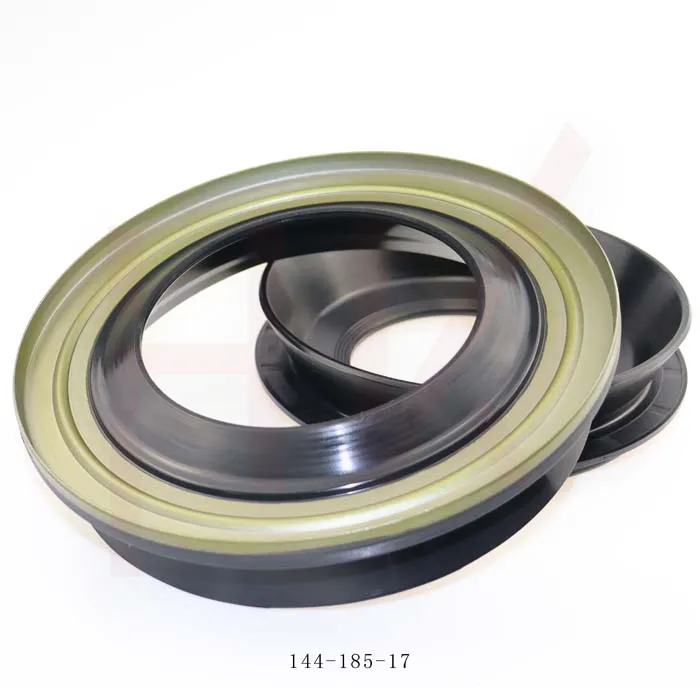Oct . 11, 2024 14:08 Back to list
Optimizing Cylinder Rod Wipers for Enhanced Performance and Durability
Understanding Cylinder Rod Wipers Importance and Applications
Cylinder rod wipers are critical components in hydraulic and pneumatic systems, serving a vital role in maintaining the efficiency and longevity of machinery. These wipers are designed to prevent dirt, debris, and moisture from entering the cylinder, thus protecting the piston and internal components from wear and damage. In this article, we will delve into the significance of cylinder rod wipers, their applications, and the factors to consider when selecting the right wiper for specific needs.
The Role of Cylinder Rod Wipers
Hydraulic and pneumatic systems rely heavily on cylinders to convert fluid power into mechanical motion. The cylinder rod, which extends and retracts within the cylinder, is exposed to various environmental factors. Without proper shielding, contaminants can infiltrate the system, leading to increased friction, wear, and potential failure of components.
Cylinder rod wipers are strategically placed at the rod exit point. Their primary function is to scrape off any media—such as hydraulic fluid, dust, or moisture—that may cling to the rod as it retracts. By doing so, they ensure that only clean surfaces enter the cylinder, which significantly reduces the risk of premature wear and enhances the operating efficiency of the entire system.
Types of Cylinder Rod Wipers
There are several types of cylinder rod wipers available on the market, each designed for specific applications and environments
1. Standard Wipers These are made from materials such as polyurethane or rubber and are suitable for general applications where the environment is relatively clean.
2. Heavy-Duty Wipers Constructed from more resilient materials, heavy-duty wipers can withstand harsher conditions, including abrasive particles or extreme temperatures.
3. Double Lip Wipers These feature two sealing lips, providing an extra layer of protection against contaminants. They are ideal for high-performance applications where the cleanliness of the rod is critical.
cylinder rod wiper

4. Specialized Wipers Some applications may require wipers with unique properties, such as resistance to specific chemicals or temperatures. These specialized wipers ensure that the system remains operational under challenging conditions.
Selection Criteria for Cylinder Rod Wipers
When choosing a cylinder rod wiper, several factors should be considered to ensure optimal performance
- Material Compatibility The wiper material must be compatible with the media it will encounter, whether it be hydraulic oil, hydraulic fluid, or air. Selecting the right material helps prevent chemical degradation and extends the life of the wiper.
- Working Environment Evaluate the operating conditions, including temperature extremes and exposure to contaminants. Heavy-duty or specialized wipers may be necessary for more demanding environments.
- Rod Diameter and Application Wipers come in various sizes and designs. It's essential to select a wiper that matches the rod diameter and is compatible with the cylinder design to ensure a proper fit.
- Installation Configuration Examine how the wiper will be installed in relation to other components. A well-designed installation will facilitate easy replacement and maintenance.
Conclusion
Cylinder rod wipers play an indispensable role in the performance and sustainability of hydraulic and pneumatic systems. By effectively minimizing contamination, they help ensure smooth operation, reduce maintenance costs, and extend the lifespan of machinery. As industries continue to emphasize efficiency and reliability, the selection of the right cylinder rod wiper becomes increasingly critical. Understanding the various types of wipers and their applications, along with considering key selection criteria, will empower engineers and technicians to make informed choices that enhance machinery performance and reliability.
-
TCN Oil Seal Metal Ring Reinforcement for Heavy Machinery
NewsJul.25,2025
-
Rotary Lip Seal Spring-Loaded Design for High-Speed Applications
NewsJul.25,2025
-
Hydraulic Cylinder Seals Polyurethane Material for High-Impact Jobs
NewsJul.25,2025
-
High Pressure Oil Seal Polyurethane Coating Wear Resistance
NewsJul.25,2025
-
Dust Proof Seal Double Lip Design for Construction Equipment
NewsJul.25,2025
-
Hub Seal Polyurethane Wear Resistance in Agricultural Vehicles
NewsJul.25,2025
-
The Trans-formative Journey of Wheel Hub Oil Seals
NewsJun.06,2025
Products categories
















